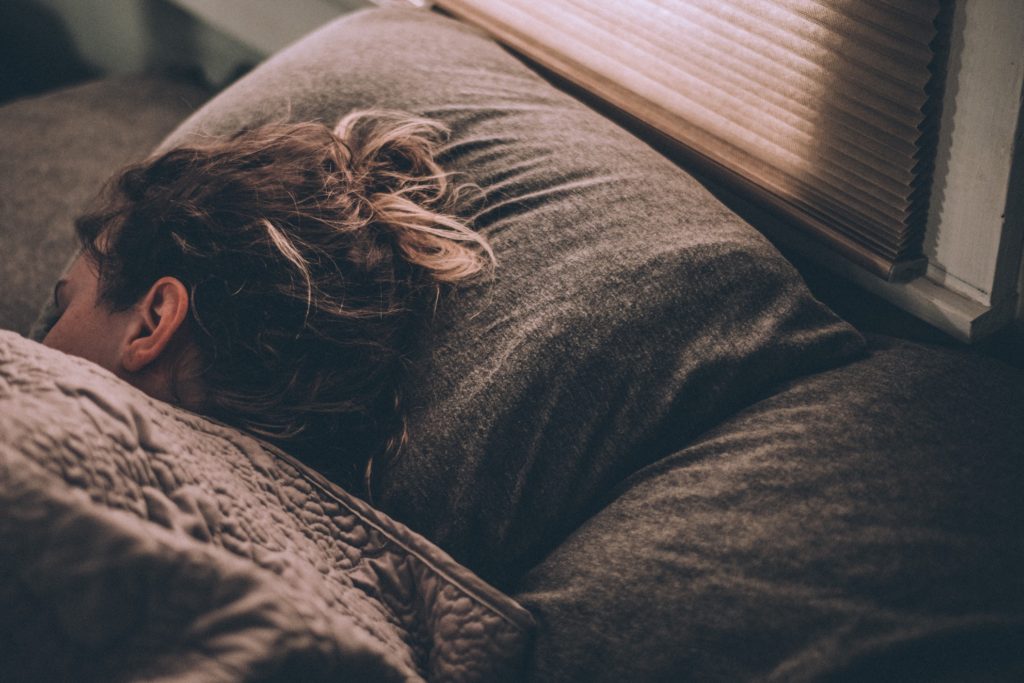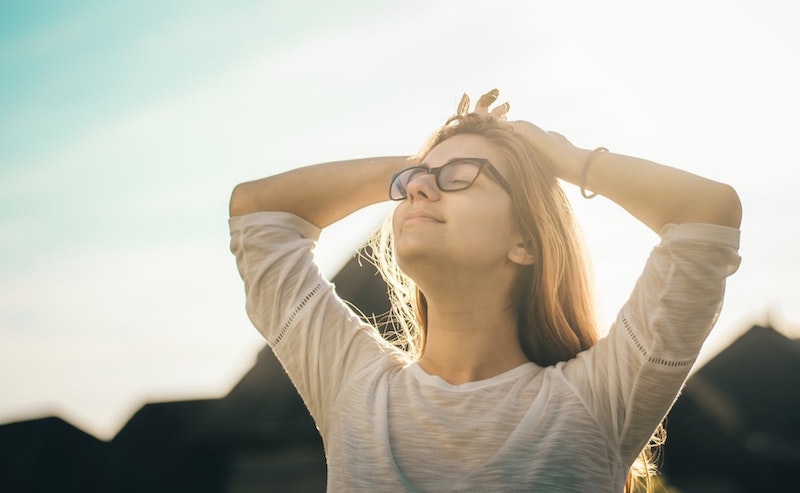Can’t sleep before a big day? Felt sleepy during the day but somehow you struggle to sleep when you get in bed? Find yourself feeling restless and anxious whenever you close your eyes to sleep? Experiencing many a sleepless night for days on end? You might want to try the Progressive Muscle Relaxation (PMR) method.
Sleepless nights are a problem that plagues many people. It can feel like torture as you toss and turn in bed, trying your best to clear your mind as you attempt to fall asleep as quickly as possible. You may become impatient to get to sleep quickly, or you may become frustrated with your inability to sleep, which can actually make it even harder to fall asleep on such restless nights. By repeating such experiences every night, you may start to dread the night time. This stress will make your insomnia worse, and you will fall into a vicious cycle of restless nights.
In order to break this cycle, it is necessary to prepare for sleep instead of just facing restless nights and hoping for the best. Preparing for bed means getting your body and mind into the right state for sleeping. The most important thing to do is to relax your body and mind. Otherwise, you may risk falling into one of the many types of insomnia.
For more information on insomnia, check out the article below.
Contents
Relaxation is Essential for a Sleepless Night
Many people probably recognize that relaxation is important in achieving good quality sleep. However, no matter how much you tell yourself to relax, it’s a lot easier said than done, especially on those pesky sleepless nights. In order to promote a state of relaxation, you need to work on your body and mind in an appropriate way that suits you personally. Here, we’ll introduce some of the most common relaxation methods.
Listen to Music on a Sleepless Night
Many experts believe that music is influential on the human mind. Studies show that listening to music can reduce heart rate and blood pressure. Recently, “music therapy” has become a form of treatment in medical fields. To promote a state of relaxation, choose a song with a slow tempo that calms you down. By focusing on listening to the music, negative thoughts can be suppressed and a relaxing effect can be achieved.
Pleasant Scents for a Sleepless Night
Like music, the scent also has an effect on the human body and mind. Filling your bedroom with relaxing scents can help you calm down and get a good night’s sleep. For example, using essential oil diffusers, or scented candles. You could also try achieving relaxation effects through aromatherapy baths. Add aromatic essential oils to the water during bathing, or use aromatic oils for massages and skincare. Lavender, bergamot, and sweet orange scents are said to be effective for restful sleep and relieving negative moods.
Belly Breathing for a Sleepless Night
Belly breathing is a breathing technique in which you consciously try to depress and expand your lower abdomen. When you exhale, you exhale long and slow so that your lower abdomen dips, and when you inhale, you inhale so that you deliberately expand your lower abdomen. Repeating this exercise is called belly breathing. People tend to breathe shallow and fast when they are nervous or stressed. On the contrary, breathing deeply and slowly can lead the body and mind into a relaxed state. If you imagine that you are breathing out the tension in your body with each breath, it will increase the effect of relaxation.
Activities that Might Trigger a Sleepless Night
By creating a state of relaxation at bedtime through the above actions, you can lead your body and mind into a state suitable for sleep. On the other hand, there are some activities you should ideally avoid before bedtime, as they may exacerbate every sleepless night.
・Vigorous exercise
・Consumption of caffeine or nicotine
・Use of computer, smartphone, or television
These activities excite and awaken the brain, making it harder to fall asleep. Ideally, you should abstain from these activities before bedtime if you frequently find yourself in a sleepless night.

What is “Progressive Muscle Relaxation”?
One method of relaxing the body and mind is “progressive muscle relaxation (PMR)”, invented by an American neurophysiologist in the 1930s. It is a method of relaxing the body and mind by consciously relaxing the muscles throughout the body. The method can be practiced by oneself and does not require any special tools or environment. As such, specialists use the method in cancer treatment, amongst other medical therapy, as an easy relaxation method.
The muscles of the human body are closely related to the cerebrum and nervous system. Therefore, relaxation of the muscles can suppress the excitement of the cerebrum. By relaxing the muscles through PMR, the excitation of the cerebrum is suppressed, and the autonomic nervous system becomes parasympathetic. This leads to a state of relaxation in both body and mind.
PMR Technique for a Sleepless Night
In the PMR technique, you tense the muscles in each part of the body for 10 seconds, then relax them for 15 to 20 seconds, repeating these basic movements. When applying tension to a muscle, focus on the muscle in that area. In turn, when relaxing, be conscious of the force that is being released. Below is a step by step guide of the PMR technique in practice.
Extend both arms out in front of you, then close your fists around your thumbs and squeeze tightly. After 10 seconds, slowly extend your hands and relax them on your knees for 15 to 20 seconds.
(*The below body parts follow the same basic steps: tense your muscles for 10 seconds, before relaxing them for 15 to 20 seconds.)
Make sure you try this in a relaxing environment, sitting in a chair with your back straight.
Steps in the PMR Technique
- Both hands
Extend both arms out in front of you, then close your fists around your thumbs and squeeze tightly. After 10 seconds, slowly extend your hands and relax them on your knees for 15 to 20 seconds.
(*The below body parts follow the same basic steps: tense your muscles for 10 seconds, before relaxing them for 15 to 20 seconds.) - Upper arm
Bring your clenched fist close to your shoulder and apply force to the entire bent upper arm, then relax and unclench. - Back
In the same vein as #2, extend your upper arms outward and pull your shoulder blades to the center of your back. - Shoulders
Raise both shoulders as if you were squeezing your neck, and put strength into your shoulders. - Neck
Twist your head to the right side with all your strength. Repeat the same for the left side. - Face
Squeeze the mouth and apply force as if to scrunch up all your facial parts in the center. When releasing the tension, open your mouth as if to relax your lower jaw. - Abdomen
Put your hand on your abdomen and apply pressure as if to push back against your hand. - Legs and feet
Extend your legs all the way by pointing your toes, and tense the muscles on the underside of the legs. Next, extend the foot and bend the toes upwards, tensing the muscles on the upper side of the legs. - Full body
Tense all the body parts and muscles mentioned from #1 through #8 above, and hold for 10 seconds. Then slowly release the tension, and relax your whole body over 15 to 20 seconds.
Take it Slow and Aviod a Sleepless Night
Complete the above progressive muscle relaxation exercises over the course of 10 to 15 minutes. The goal is to learn how to tense up your muscles to the maximum, then relax them all at once. Be careful of over-exerting yourself, however, as this can lead to leg cramps and unexpected muscle injuries. Keep in mind that you should put 60-70% of your energy into each muscle. Once you get used to it, you will find it an easy way to relax at any time and place, especially on a sleepless night, but even outside of bedtime.

Sleepless Night? Do What Works for You!
There are many more common relaxation methods to try on a sleepless night than the ones mentioned so far. The important thing is to practice relaxation in a way that suits you. If you don’t know what method is right for you, you should start with something that is easy to do, and try out various methods.
Sleep is a healthy behavior that is essential for humans to sustain life. It also occupies so much time in our lives that most people spend one-third of their lives sleeping. Having a good sleep habit will help you maintain good physical and mental health throughout your life, and contribute to your ability to reach your full potential and achieve further growth. It may not be easy to change the lifestyle habits that are already ingrained in your body and develop better sleeping habits. But if you think that it will make your life healthier and more fulfilling, it will be well worth the effort.
→ Looking to improve your mental health? Try the SELF MIND app FREE for 1 week!
If you’re looking for more tips on how to care for your mental health, check out some of our past blog posts!
Image: Unsplash
References:
Japan Ministry of Education, Culture, Sports, Science and Technology. (2009). Coping with Stress. Retrieved from: https://www.mext.go.jp/a_menu/shotou/clarinet/002/003/010/004.htm#top
Kawazoe, I., Norikane, K., & Kitajima, Y. (2016). Effects of Relaxation Method by Breathing and Progressive Muscle Relaxation on Nursing Students. Journal of Health Sciences Research 6, 29-39.



